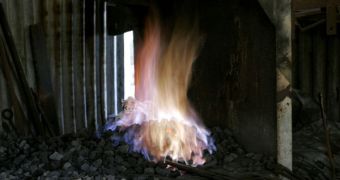Latest discoveries made at archaeological sites in northern Israel push back the estimated period in which man discovered fire by as much as 500,000 years. Scientists working at the Gesher Benot Ya'aqov dig site uncovered bulks of burnt items on top of each other, organized in layers. The deepest such layer was approximately 790,000 years old and, yet, it housed burnt remains, which would suggest that the inhabitants of the settlement had mastered fire and passed its secrets to other generations as well.
It would also appear that the mastering of fire was the primary means that allowed hominids to move from Africa to Eurasia, following the Dead Sea rift. With this ability, prehistoric people were able to better defend themselves against predators and other groups, as well as to diversify and explore new foods. For the first time, the night was not all dark and cold, as fire provided both light and warmth to caves and other early settlements.
"The new data from Gesher Benot Ya'akov is exceptional as it preserved evidence for fire-use throughout a very long occupational sequence. This continual, habitual, use of fire suggests that these early humans were not compelled to collect that fire from natural conflagrations, rather they were able to make fire at will," said Dr. Nira Alperson-Afil, a member of the team working at the dig site.
"The powerful tool of fire-making provided ancient humans with confidence, enabling them to leave their early circumscribed surroundings and eventually populate new, unfamiliar environments," she added, referring to the circumstances that allowed the prehistoric man to eventually conquer the entire world.
The new discovery sheds new light and new questions on the prehistory of human civilizations. As anthropologists have said, lots of things can happen in 500,000 years. Most likely, during this period, man spread through the single continent that existed at the time and eventually reached the outer limits of the world, as in the deserts and the ice caps. After that, humanoid habitats settled to relatively fixed positions.

 14 DAY TRIAL //
14 DAY TRIAL //